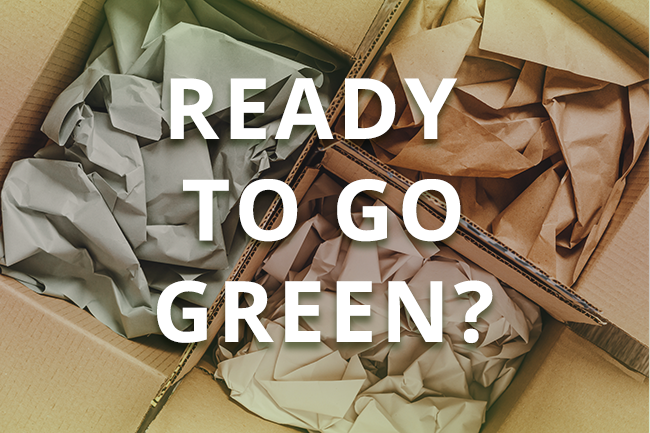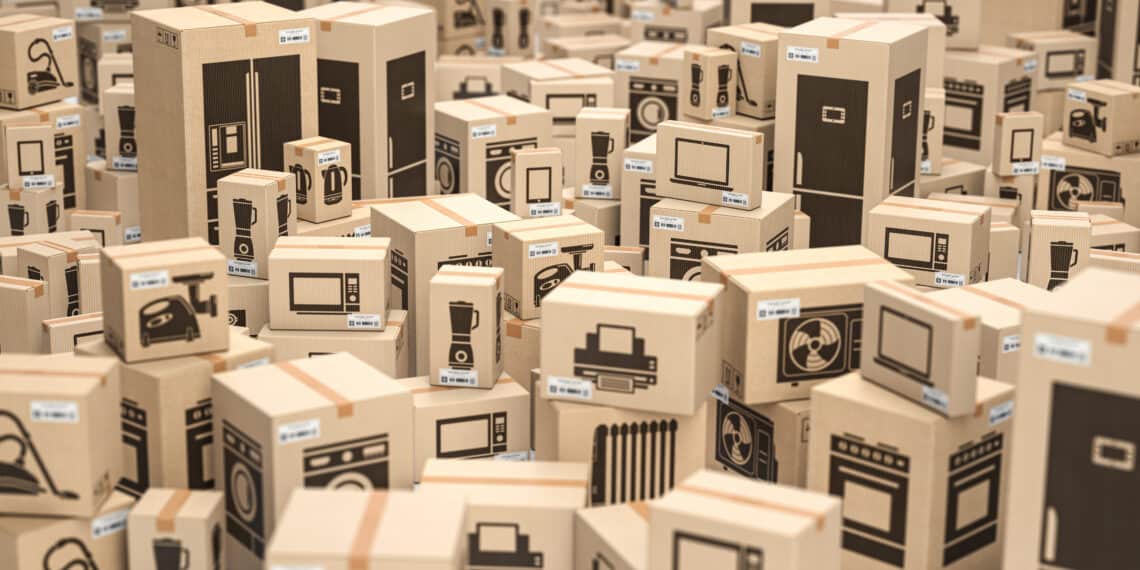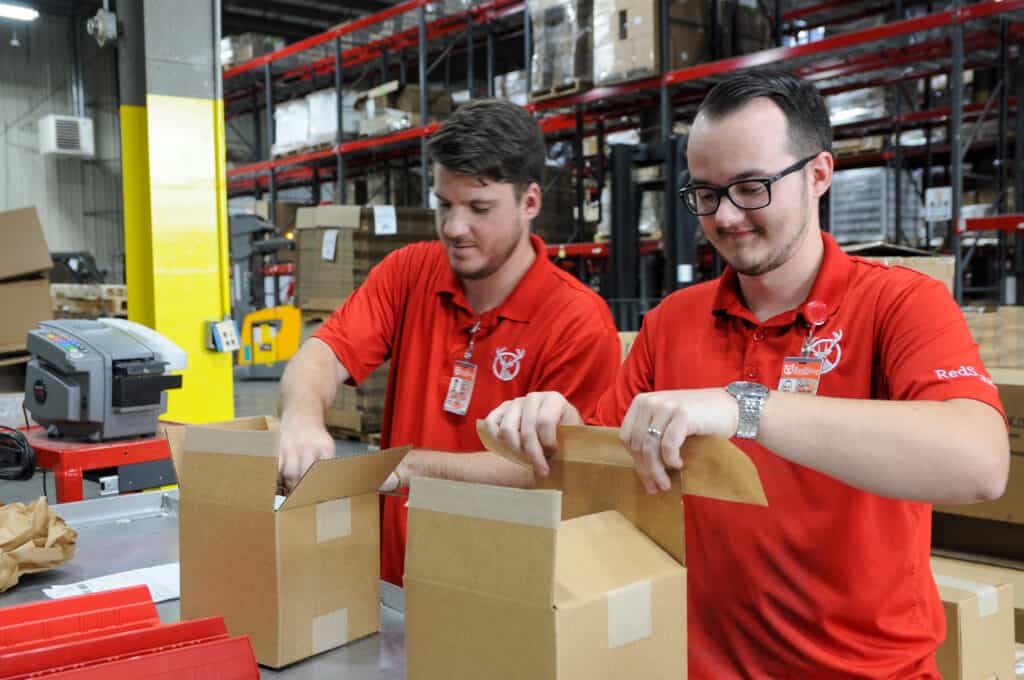Using sustainable packaging for eCommerce fulfillment has broad appeal with consumers. It can save you money while you reduce your brand’s carbon footprint. And eco-friendly packaging isn’t just an environmentally sound choice today but also a wise business decision.
With the growing interest in environmental conservation and improved health of the environment, packaging has evolved into one of the indices for measuring your brand’s credibility, integrity, and commitment to green business initiatives.
In this article, we cover sustainable packaging materials and best practices for reducing the environmental impact of your eCommerce business.
Why sustainable packaging?
Research has shown that customers are willing to pay more for products that use sustainable packaging. That means you can increase your chances of selling a product by using compostable or reusable packaging or recycled materials.
If you ship your orders in packaging that ends up in landfills, it hurts consumer perception of your brand’s integrity and credibility. And you could lose your customers to competitors who have taken steps to reduce packaging waste and stepped up to extended producer responsibility for the life cycle of the products, including packaging sustainability.
Ensuring that your packaging materials pose no threat to the environment is an excellent way to earn trust and increase your sales.
Red Stag Fulfillment offers many sustainable packaging solutions, and we work with each client to develop packaging options that meet our goals for green packaging.

What is sustainable packaging?
Sustainable packaging uses biodegradable, renewable, reusable, compostable, or post-consumer recycled materials. Sustainability also encompasses all the measures your business takes to reduce or eliminate the adverse effect of packaging and shipping products, including end-of-life initiatives and reducing the amount of single-use plastics in your packaging.
From packaging materials to shipping options, consumers expect eCommerce brands to commit to practices that reduce the environmental impact of consumer goods. It’s crucial to do more than use kraft paper or compostable peanuts for infill. Consumers are more informed than they were a few years ago. To gain their trust, you should do a life cycle assessment of the impact of your packaging and look for ways to meet your packaging needs that reduce emissions and are kind to the environment.
Ask your 3PL these questions to guide you through your decisions:
- Are my packaging materials biodegradable, reusable, and eco-friendly?
- Are the materials easy to dispose of? Can I use compostable packaging?
- How will I source my packaging materials, or how does my 3PL service provider source its packaging materials?
- What are the best packaging styles and print processes for my product?
- What shipping options are available to me?
- Do I need a green packaging certification?
If you use a fulfillment center, work with your 3PL services provider to develop a sustainable packaging plan. For example, Red Stag Fulfillment offers industry-leading fulfillment accuracy with many sustainable packaging options.

Green packaging is more than a recyclable box
Simply choosing sustainable packaging materials doesn’t necessarily translate into a sustainable packaging practice. To create an eCommerce packaging initiative that puts your brand firmly in the circular economy, take these steps:
- Ensure that your packaging protects your product throughout the supply chain.
- Educate your customers on how to reuse or recycle your packaging material.
- Create a system that ensures that packaging materials are used efficiently.
- Ensure that materials are continuously cycled and discourage degradation as much as possible.
- Ensure that your packaging doesn’t pose a risk to human health or the environment.
8 of the best sustainable packaging materials
Sustainable packaging material is any material that does not contain hazardous chemicals or carcinogens. These materials are usually organic and sourced responsibly. Here’s a brief rundown of some of the most common and most eco-friendly packaging options.

1. Paper materials
More than 50 percent of packaging in the U.S. involves paper, often in the form of cardboard. In 2018, half of the total global paper production went to make packaging.
Paper is biodegradable, recyclable, and easily printed on. Paper packaging includes corrugated boxes, kraft paper infill, or molded cardboard box inserts to keep fragile items safe during shipping.
Gummed paper tape for sealing boxes has a water-soluble glue you activate by getting it wet. It is the preferred tape of many 3PLs because it seals tubes securely while keeping packaging costs low. Paper tape can also be self-adhesive, though it’s less recyclable than tape with water-based adhesive.

2. Biodegradable packing peanuts and cornstarch packaging
Cornstarch is a preferred alternative to plastic because of its plastic-like properties. Packaging manufacturers can use cornstarch to produce bottles, molded foams, or fillers that are recyclable or biodegradable.
Several states in the U.S. have banned the use of styrofoam and, even where they’re legal, styrofoam packing peanuts can create a nuisance because they float away in the wind and are hard to dispose of. Fortunately, there’s a better alternative: compostable packing peanuts.
These biodegradable packing peanuts are made from non-food plant ingredients, often cornstarch, that dissolve in water or go in a compost bin.

3. Corrugated bubble wrap
Corrugated bubble wrap is less hazardous than its plastic counterparts. Like plastic bubble wrap, this infill material comes in rolls and has air pockets to provide flexible cushioning to protect products during shipping. Corrugated bubble wrap has the added advantage of being cheaper than the plastic version.

4. Organic fabrics
Organic fabrics can serve the same purpose as plastic bags. These bags can replace single-use shopping bags produced from organic materials like hemp, cotton, tapioca, etc. Organic fabrics biodegrade more quickly than normal plastic and can be reused multiple times.

5. Mushroom packaging
Mushrooms, often combined with other natural materials, can be made into economical, eco-friendly product packaging. Mushroom packaging best suits smaller items, may be molded into any desired shape, and is compostable.

6. Compostable packaging
There are more compostable options available every year, particularly for food packaging. Packaging made from organic sources such as corn, bamboo, or cellulose may be able to go into municipal compost waste streams, returning the packaging to the soil and reducing what your company contributes to the landfill.

7. Seaweed packaging
Another natural substitute for plastic, most often used in food packaging, is seaweed. This type of packaging is biodegradable.

8. Biodegradable polymers and bio-based and recycled plastics
Biodegradable polymers are another great alternative to plastic, often used in food packaging. The polymers, made from a variety of natural and synthetic materials, decompose into CO2, water, inorganic compounds, and biomass.
Avoid single-use plastic as much as possible because consumers prefer products not wrapped in plastic packaging. If your product needs packaging that has the properties of plastic, consider one of the bioplastic alternatives listed above.
If you have to use plastic as an infill, air pillows provide excellent cushioning with minimal non-biodegradable plastic. You can also use recycled plastic packaging, but plastic recycling is extremely limited, so avoid traditional plastic packaging whenever possible.

Environmentally friendly printing for sustainable packaging
Most finished packaging includes a printed logo, message, or image. If you print your logo onto boxes using inks that are toxic and difficult to remove, your packaging will be difficult or impossible to reuse, recycle, or compost.
According to the U.S. National Association of Printing Ink Manufacturers (NAPIM), ink is bio/renewable when:
- It’s made from trees, plants, insects, or animal materials
- It comes from eco-friendly materials
You can also verify the content of your ink through the NAPIM’s Biodegradable Content (BRC) program.
This program helps you determine whether an ink contains a substantial amount of bio-renewable content. A sustainable printing process will help:
- Produce lower-weight packaging
- Reduce volatile organic components
- Improve chances of recycling
- Extend the shelf life of your packaging
Sustainable packaging certification

The Sustainable Packaging Coalition is a packaging industry group that fosters green packaging initiatives. Check if your suppliers are members of the coalition and ask about sustainable options.
The Forest Stewardship Council (FSC) offers eco-friendly certifications. An FSC certification proves that your brand complies with the highest social and environmental standards in the market. As a brand owner, you can sign up for forest management certification or chain of custody certification.
The three levels of packaging
Packaging is more than the box protecting your product. All packaging requires three levels of engagement, whether or not you outsource your fulfillment. Understanding these elements will help you make better choices for environmentally friendly packaging materials.
1. Primary packaging
Primary packaging is the packaging that comes in contact with the product directly. Its function is the finished product’s containment, protection, and preservation. This could be the bottle holding lotion along with the label, a box of dog treats, or the box containing an inflatable kayak.
Primary packaging is usually appealing because it conveys your brand’s message to consumers. This level of packaging is where creativity is most needed. You must craft the right brand message and choose the appropriate inserts and colors.
2. Secondary packaging
The boxes that contain and protect primary packaging, maintaining its integrity, are secondary packaging. This may include a box, padding, reinforcement, separators, papers, etc. In some cases, 3Ls can ship eCommerce orders in the secondary packaging without an additional box.
3. Tertiary packaging
The final level of packaging groups larger quantities of SKUs to transport them from one point to another. Tertiary packaging helps prevent damage while facilitating the storage and transportation of goods. Tertiary packaging may not require visually appealing materials. It includes large wooden crates for wholesale distribution, pallets and shrink wrap, and boxes used to ship online orders.

Turn to Red Stag Fulfillment for eco-friendly logistics
From increased sales to building a solid brand reputation, sustainable packaging is a win for your business, your customers, and the planet. Red Stag Fulfillment stocks eco-friendly packaging options. We’re always looking for ways to help our clients reduce supply chain waste and lower packaging costs.
Still have questions about sustainable packaging? Hit us up; we have answers.
More packaging ideas:
- What ECommerce Companies Need to Know About Custom Packaging
- How to Ship Large Boxes and Oversized Packages Affordably and Safely
- ECommerce Packaging: The Ultimate Guide
FAQs:
What are some of the harmful effects of using unsustainable packaging?
Unsustainable packaging has several harmful effects:
- Manufacturing materials such as styrofoam and plastic create toxic waste. Plus, they aren’t recyclable, and plastic waste may persist in the environment for decades. Removing these materials from your supply chain supports environmental sustainability.
- When a customer buys one of your products, they ultimately must dispose of the packaging. Boxes and infill that consumers can’t recycle, reuse, or compost create a messy hassle for them to deal with.
- Consumers want to support brands that take conscious steps to reduce their carbon footprints. Unsustainable packaging creates a negative impression and can reduce customer loyalty.
What are some benefits of sustainable packaging?
Sustainable packaging options are so varied that you don’t have to give up product protection to make a green choice. When you do, you’ll also get these benefits:
- You enhance your brand’s green reputation, boosting consumer opinions of your company.
- Green packaging has a smaller environmental impact and is cheaper to dispose of.
- Your customers will find it easy to reuse, recycle, or compost the packaging when they receive your products, giving them a delightful unboxing experience.
What is considered sustainable packaging?
Sustainable packaging is any box, container, or infill material that can be recycled, composted, or otherwise kept out of the landfill waste stream. Eco-friendly packaging is made from responsibly sourced raw materials with an eye to the full life cycle of the components.
What is the difference between sustainable packaging and recyclable packaging?
Recyclable packaging is a type of sustainable packaging. Recyclable materials such as paper goods can be reused and made into other products. Corrugated cardboard often contains post-consumer waste content. When paper materials can no longer be reused, they may be composted. Some plastic packaging is labeled as recyclable, but plastic recycling is very limited, so this isn’t the best choice if you aim for green packaging design.
This post was originally contributed by Vitor Botega, Head of Partnerships of Arka, in January 2021, and updated by Red Stag Fulfillment in April 2023. Arka packaging materials are FSC certified.








